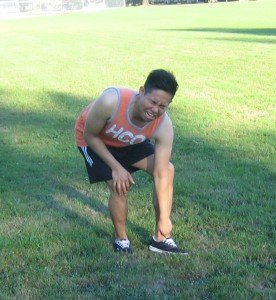Shin pain typically occurs among athletes involved in jumping, running or high-impact sports. The pain can be triggered by shin splints, compartment syndrome or a stress fracture of the tibia. The usual source of shin pain among runners is shin splints.
Indications
Depending on the cause of shin pain, athletes usually complain initially of pain, burning sensation or tightness throughout the shin. The next are indications of bone and muscle-related shin pain.
Bone-related shin pain
- Pain in a localized area of the shin
- Discomfort during and after running
Pain only during running that is alleviated by rest. - Pain that worsens over time
Muscle-related shin pain
- Minor soreness
- Pressure or tightness in the shin while running
- Numbness, tingling or weakness in the foot
- Pain only during running that is alleviated by rest
- There is absence of pain when the bone is pushed
What are the possible causes?
It is important to note that shin pain is generally the result of one or several of these issues:
- Body mechanics – some might experience pain or discomfort from poor body mechanics. The manner on how the body moves can be affected by various factors.
- Strenuous exercise – this can be an issue if an athlete rapidly increases the level of activity. Generally, there should be no more than 10% increase in the frequency, duration or intensity of exercise every week.
- Bone density – the possible causes of low bone density include genetics, lack of calcium in the diet and irregular periods
Treatment
A period away from running might be required for stress fractures or shin splints to properly heal. Even though the athlete might be able to run with shin splints, this can cause the condition to progress further to a stress fracture.
During the rest period, it is recommended to cross-train with non-impact activities such as swimming or biking if there is no pain. Application of ice and acetaminophen are beneficial for the pain but non-steroidal anti-inflammatory drugs (NSAIDs) such as ibuprofen or naproxen can slow down the healing of stress fractures.
Disclaimer / More Information
The information posted on this page on shin pain is for learning and educational purposes only. To learn more about injuries or conditions causing shin pain, register for first aid training at one of our training centers located throughout Canada. The training centers are in Edmonton, Calgary, Vancouver, Kelowna, Surrey, Winnipeg, Toronto, Ottawa and Halifax.

